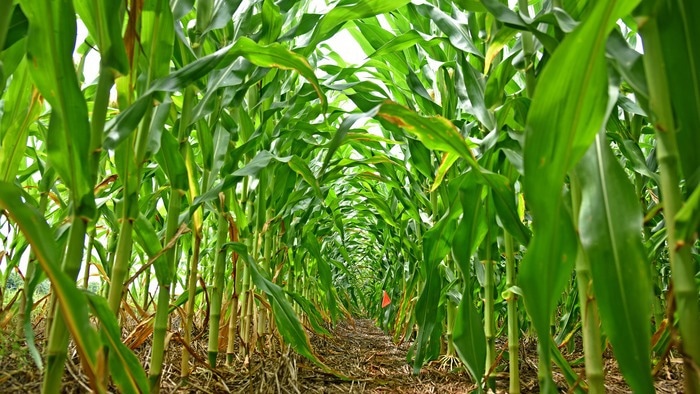A Policy Forum article that was just published in Science calls for a new method of regulating genetically engineered (GE) crops, claiming that the current procedures for mandating safety testing are inconsistent internationally and generally unfounded in science, especially given how closely conventional breeding and genetic engineering have become intertwined in crop improvement.
 Safety testing would be recommended for products with new characteristics that have the potential for health or environmental effects, or for products with differences that cannot be interpreted. Most new varieties would not trigger a need for regulation. Image Credit: NC State University
Safety testing would be recommended for products with new characteristics that have the potential for health or environmental effects, or for products with differences that cannot be interpreted. Most new varieties would not trigger a need for regulation. Image Credit: NC State University
The study claims that a more effective framework would assess the precise new traits of the crop itself by employing so-called “-omics” methodologies, as opposed to concentrating on the procedures and processes involved in the development of a GE crop to determine whether testing is required.
Genomics can be used to search new crop varieties for unexpected DNA alterations, much like biomedical sciences can utilize genomic methods to search human genomes for harmful mutations.
Transcriptomics, proteomics, epigenomics, and metabolomics are further “-omics” methods that look for additional alterations in the molecular make-up of plants. These measurements of tens of thousands of molecular traits can be used as a fingerprint to identify whether a new variety’s output is “substantially equivalent” to output from existing varieties.
For instance, they can tell whether a new peach variety shares molecular traits with one or more commercial peach varieties already in use.
No safety testing would be advised, the study says, if there are no differences between the new product and products of existing types, or if there are differences that are understood and have no expected effects on health or the environment.
However, safety testing would be advised if the product had new features that might have an impact on health or the environment or if it had variations that couldn’t be explained.
The approaches used right now—which differ among governments—lack scientific rigor. The size of the change made to a product and the origin of the DNA have little relationship with the results of that change; changing one base pair of DNA in a crop with 2.5 billion base pairs, like corn, can make a substantial difference.”
Fred Gould, Study Corresponding Author and University Distinguished Professor, North Carolina State University
Gould is also the co-director of NC State’s Genetic Engineering and Society Center.
In terms of CRISPR-created variety, for instance, the European Union controls all varieties whereas other governments base their choices on the extent of the genetic modification and the source of the genetic material. GE crop types that have been generated using techniques other than genetic engineering are exempt from regulation, according to a rule published by the US Department of Agriculture in 2020.
According to Gould, the “-omics” approaches, if utilized properly, would not raise the cost of regulation, and the majority of new types would not necessitate control.
Gould added, “The most important question is, ‘Does the new variety have unfamiliar characteristics.”
The study predicts that within the next five to ten years, technological advancements might bring down the price of a set of “-omics” testing from $10,000 to $5,000.
The process of creating this new regulatory framework would begin with the creation of an international committee made up of crop breeders, chemists, and molecular biologists to determine the possibilities and costs of “-omics” methods for a variety of crops. Workshops involving these professionals as well as sociologists, lawmakers, regulators, and members of the public would allow for reliable discussions that could prevent some of the issues that GE’s rollout in the 1990s ran into.
Gould stated that to get things moving and guarantee that assessments are available and accurate, national and international regulatory bodies should support these committees, workshops, and innovative research.
Genetically Engineered Crops: Experiences and Prospects, a report written in 2016 by a 20-member National Academy of Sciences committee under Gould’s leadership, sought to “assess the evidence for purported negative effects of GE crops and their accompanying technologies” and to “assess the evidence for purported benefits of GE crops and their accompanying technologies.”
The majority of that committee contributed to the newly published policy article.
Source:
Journal reference:
Gould, F., et al (2022) Toward product-based regulation of crops. Science. doi:10.1126/science.abo3034